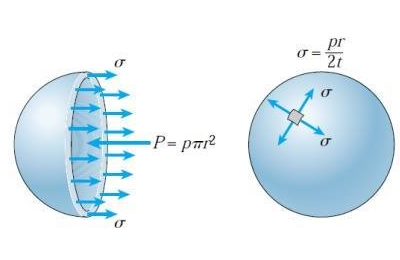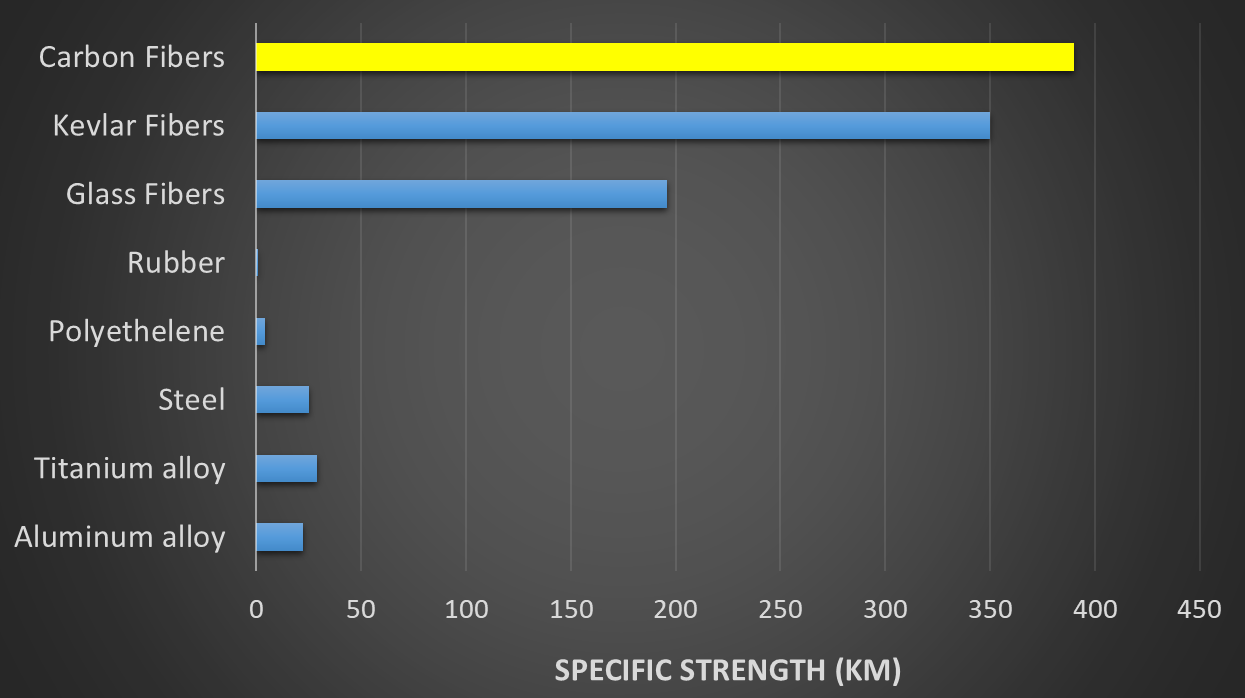Why Carbon Fiber?
Consider a spherical vessel made out of isotropic material with strength $\sigma_u$

Wall thickness of the spherical pressure vessel is calculated from,
$$ t = \frac{pR}{2\sigma_u} $$
Mass of the spherical shell,
$$ M = 4\pi R^2 t \rho $$
Internal volume of the spherical shell,
$$ V = 4/3\pi R^3 $$
Combining the above equations, we arrive at:
$$ M =1.5 \frac{PV}{\sigma_u} $$
where,
$$ s_\sigma = \sigma_u/\rho $$
$\sigma_u/\rho$ = Specific strength = Length (km) of vertically hanging fiber made of material with strength and density under which the fiber will be ruptured by its own weight
If the same pressure vessel is made from different materials, with identical internal pressure (p) and volume (V), the mass (M) of the vessel depends inversely on the specific strength ($\sigma_u/\rho$) of the material. The higher the specific strength, the lower is the mass of the pressure vessel.
The specific strengths of different materials, measured in kilometers, compared in the plot below clearly establishes why carbon fiber is one of the best choices for minimizing the weight of a pressure vessel.
